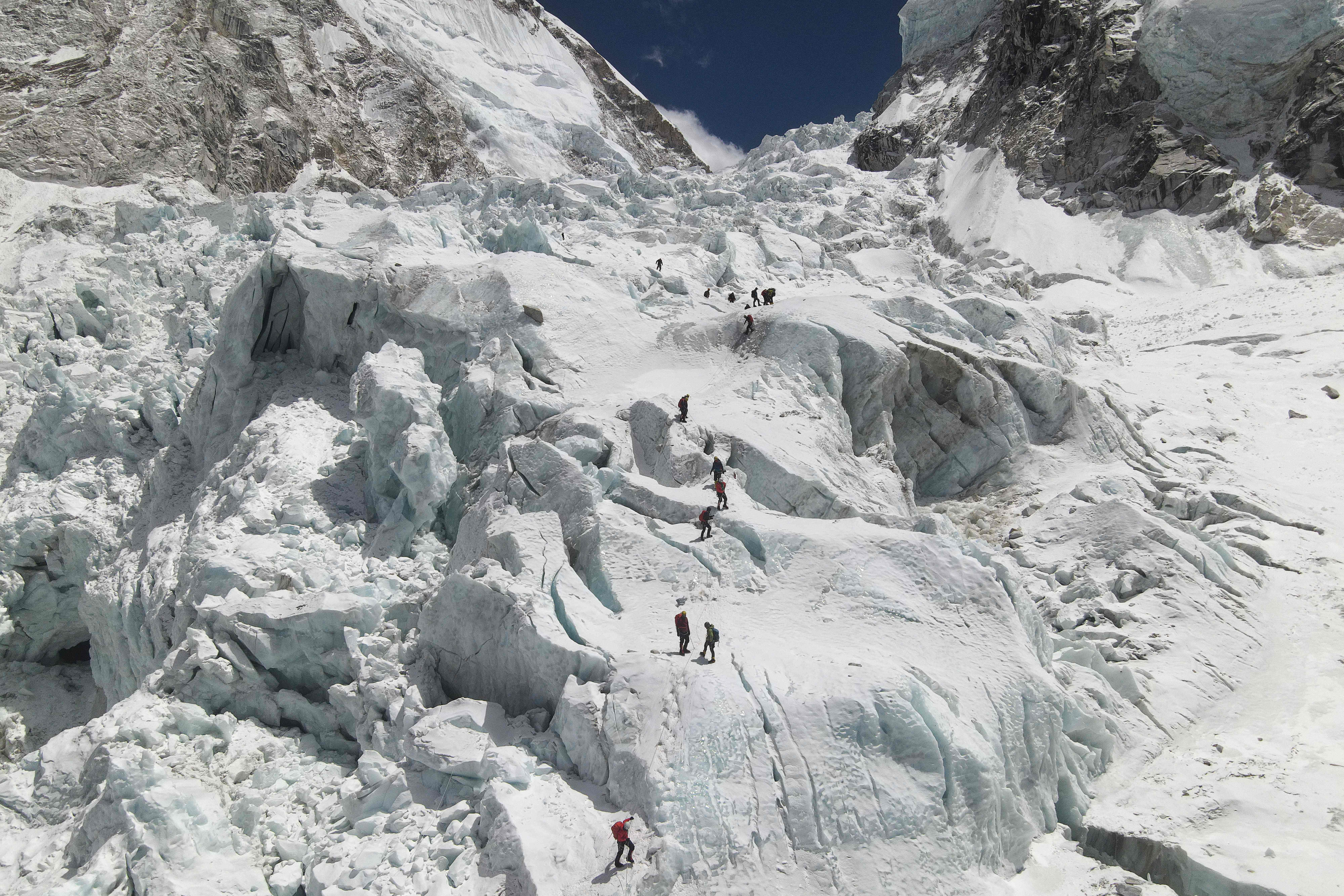Nepal to move Everest base camp from site made ‘unsafe’ by global warming and human activity
Ice is thinning at the Khumbu glacier – where the camp is based – so much so that crevasses are opening up under mountaineers as they sleep

Your support helps us to tell the story
From reproductive rights to climate change to Big Tech, The Independent is on the ground when the story is developing. Whether it's investigating the financials of Elon Musk's pro-Trump PAC or producing our latest documentary, 'The A Word', which shines a light on the American women fighting for reproductive rights, we know how important it is to parse out the facts from the messaging.
At such a critical moment in US history, we need reporters on the ground. Your donation allows us to keep sending journalists to speak to both sides of the story.
The Independent is trusted by Americans across the entire political spectrum. And unlike many other quality news outlets, we choose not to lock Americans out of our reporting and analysis with paywalls. We believe quality journalism should be available to everyone, paid for by those who can afford it.
Your support makes all the difference.Nepal’s Everest base camp will soon be moved from its original position as the famous Himalayan trekking site faces a significant threat from global warming and the impacts of increasing human activity.
The base camp – perched at an altitude of 5,364m atop the melting Khumbu glacier – attracted some 1,500 people from across the world this past spring season.
A viable location for the new base camp has been found at a lower altitude which does not have year-round ice, Taranath Adhikari, the director general of Nepal’s tourism department, told reporters.
The new campsite for climbers will be situated 200-400m lower than the existing one, the official added.
“We are now preparing for the relocation and we will soon begin consultation with all stakeholders,” Mr Adhikari said.
“It is basically about adapting to the changes we are seeing at the base camp and it has become essential for the sustainability of the mountaineering business itself.”
The rapid melting of the ice cap atop the Himalayas, a consequence of the climate crisis, is destabilising the glacier at base camp, something confirmed by climbers who said crevasses emerged under them as they were sleeping.
Arguably the world’s best-known campsite, Everest base camp is now at an altitude some 50m lower than it was in 1953 when Tenzing Norgay and Edmund Hillary climbed the world’s highest mountain.
According to climbers frequenting the site, pools of water have been seen on rocks as high up as the South Col – a mountain pass – at 8,000m.
The ice at the base camp is thinning at a rate of 1m per year, a study by Leeds University showed in 2018.
People have also reported frequent loud noises caused by the shifting of ice or crumbling of rocks in the camp area.
The crisis has been accelerated by the icemelt forming a brook which runs right through the middle of the camp in the daytime, though it freezes over at night.
Officials aware of the camp’s increasing vulnerability said the glacial stream is getting bigger every year with the flow moving at an alarming rate, according to a local report by the Nepali Times.
It does not help that the base camp’s popularity draws more climbers every year, except for the lull created by the Covid pandemic.
Climbers often set up kitchen tents with gas cookers and leave waste behind, said civil servant Khimlal Gautam, who has climbed to the summit of Mount Everest twice and says he spends around a month at base camp every year.
Everest base camp manager Tshering Tenzing Sherpa, who works in tandem with the regional Sagarmatha Pollution Control Committee, has previously said the existing site would be fit for purpose for no more than another three or four years.
Government officials, however, told reporters that shifting the camp could occur as soon as 2024.
Mr Adhikari said they will discuss the move with local communities and include their perspectives on the cultural aspects of the move. He added that the authorities have gone through the new base camp site’s technical and environmental aspects.
The shifting of the base camp will happen only after it has been discussed with all stakeholders, he said.



Join our commenting forum
Join thought-provoking conversations, follow other Independent readers and see their replies
Comments